Unlike other farm machinery, it isn’t often that an ATV manufacturer completely redesigns a product range from the ground up.
However, Canadian manufacturer Can-Am, which is part of the larger BRP group, has surprised the industry with its all-new Outlander.
Dubbed as the biggest innovation in 10 years, Can-Am completely revisited the drawing board when setting out the blueprint for the latest third generation Outlander.
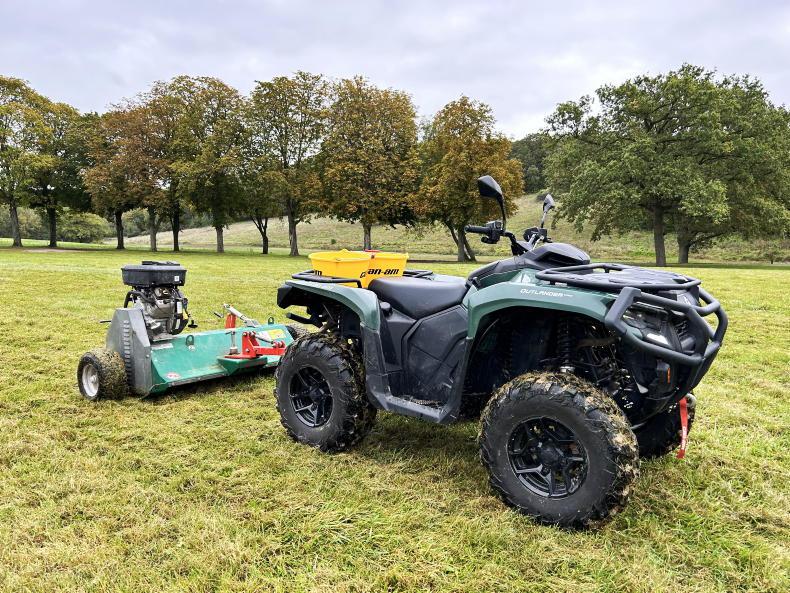
The Outlander Pro HD5/HD7 has been tweaked and fitted with added features to suit the utility sector whereas the standard Outlander 500/700 is better suited to the recreational market.
When it comes to the utility market, the new G3L Outlander Pro HD5 and HD7 models replace the Outlander 450 and 570 G2 and G2L models.
For customers with more recreational use in mind, they can opt for the new G3L 500 and 700 models.
Aside from not being fitted with full protection bars, there are engine, transmission and suspension tweaks to suit this style of user.
From two cylinders to one
First up, the previous Rotax V-Twin (twin-cylinder) motor from the larger 570 models has been swapped for a single cylinder Rotax 650cc ACE unit offered with two separate power outputs, 40hp for the 500/HD5 and 50hp for the 700/HD7 models.
Having previously tested the 570, we knew the sweet harmony of V-Twin was never going to be matched by the new single-pot power unit.
But that aside, the new motor is a trooper, helped by the marginal power increase but more notably its torque curve, which offers increases at low to medium revs.
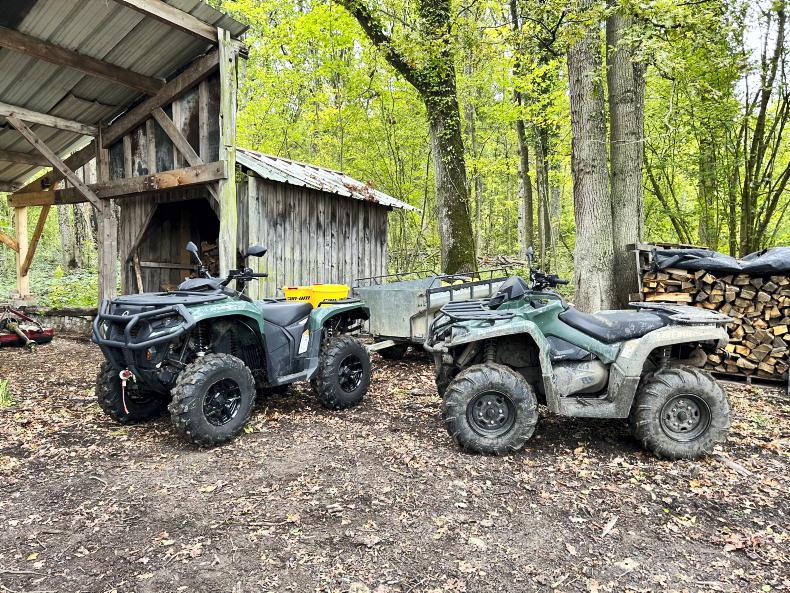
The new G3L Outlander shares very little similarities with the outgoing G2L model.
Given that our time with the new models was limited, fuel consumption was hard to compare to the 570 V-Twin.
Other benefits of the move back to a single-cylinder setup is a considerable reduction in heat, which is also now better managed given that a large block is no longer shoe-horned into the chassis.
The 180-degree repositioning of the engine means that the exhaust is now rear facing, which helps further reduce heat and noise. New fully enclosed side panels also help contain noise and heat.
Can-Am also highlighted that the move back to a single-cylinder setup brings with it a reduction in maintenance costs.
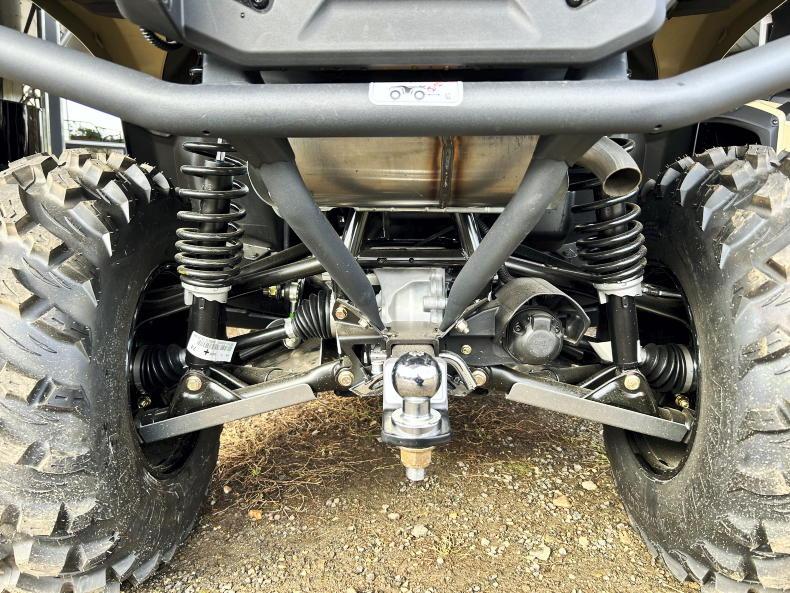
The move to double A-arm suspension and a tubular chassis improves rigidity and performance while protecting the rear driveshafts.
Transmission tweaks
The single largest fault we had with the previous G2L Outlander 570 was the clunky gear changes, which more often than not required having to rock the quad back-and-forth in order to make a direction change, especially when parked on a slope.
This was one area the R&D team at Can-Am knew needed addressing and did successfully. The new gear lever leaves for effortless shifting in all scenarios.
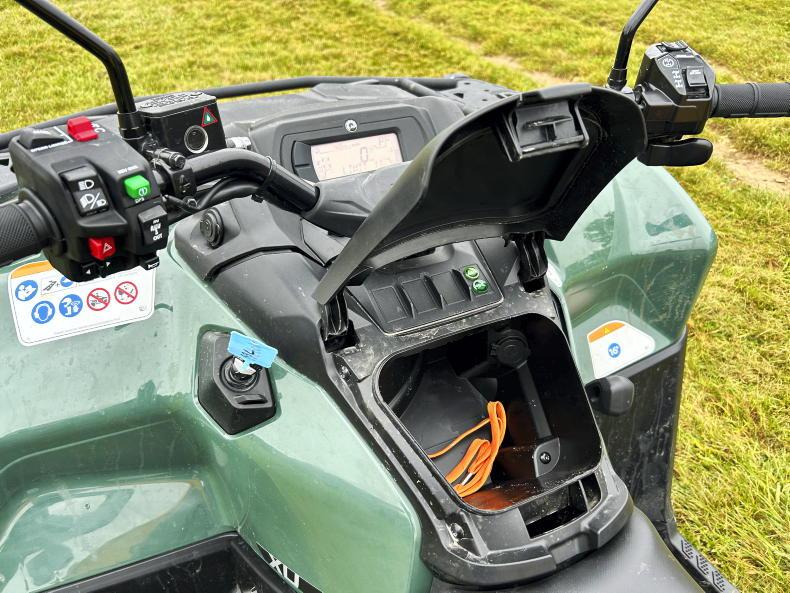
More storage has been added as standard which can be further extended using the LinQ front and rear rack attachments.
Helping make this possible is a new pDrive centrifugal primary clutch, which comprises upgraded metal rollers intended to reduce slack and allow smoother drive engagement and disengagement, as well as reduced belt wear.
Other gains include improved airflow and lower vibration levels.
The new transmission also features a three-stage intelligent engine braking (iEB) system whereby the level of braking assist can be selected between via the handle bar buttons.
Having navigated steep descents in each of the three stages, there was a noticeable difference.
However, the iEB system has been designated for Pro XU models only.
A new speed regulator function allows the rider to set a maximum forward speed, which can be adjusted on the move between 8km/h and 70km/h, a good feature for tasks such as fertiliser spreading.
All models feature selectable 2WD/4WD and either Visco-Lok auto locking front diff (Pro) or the Visco-4Lok option (Pro XU), which provides the added option of being able to manually lock the front differential and provide all four wheels with equal power.
Pro XU models also offer three selectable work modes – Work, Standard and Sport.
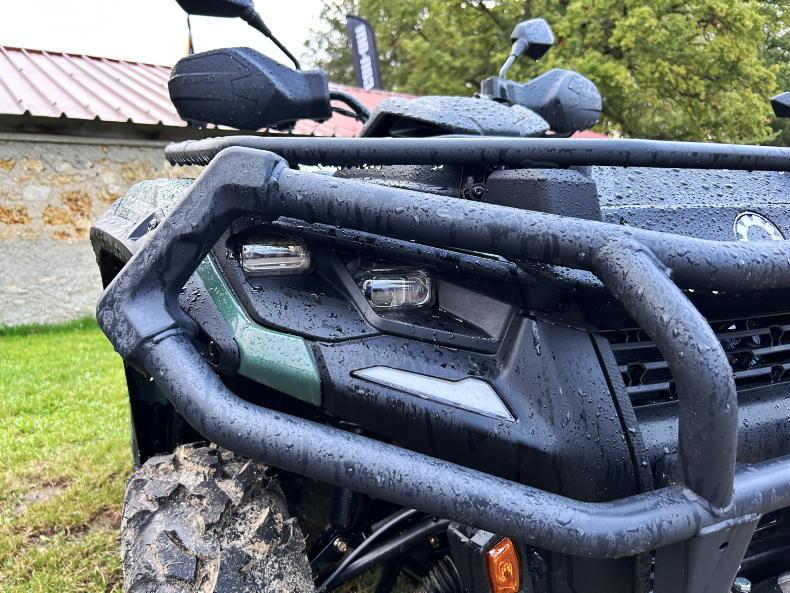
All Outlander models are fitted with LED lights as standard.
What’s new?
The engine, transmission, chassis and wheelbase are all new, while areas such as ground clearance, storage, maintenance intervals and gear changes have all been improved.
The upgraded chassis is immediately noticeable, improving ride characteristics.
The new tubular design uses a double a-arm setup and leaves the Outlander more rigid but larger in dimension.
The wheelbase measures 5cm longer, while overall dimensions are 17.4cm longer from front to back and 7.1cm wider than its predecessor.
Depending on the customer, larger dimensions aren’t always a good thing.
But Can-Am has done well in making it handle nice and compact, which is mainly down to the tighter turning circle. This is a result of the narrower engine bay having moved away from the wider V-Twin block.
All Pro XU models are equipped with a three-stage Dynamic Power Steering (DPS) system.
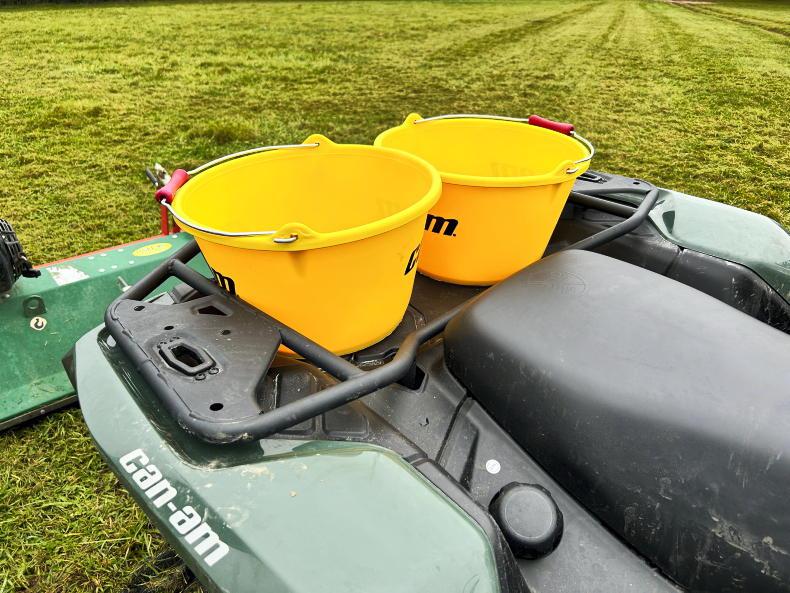
The rear cargo rack is recessed to hold items such as buckets or be fitted with LinQ attachments.
At the press of a button, riders can select between three levels of power steering assist.
For us, medium felt like the sweet spot offering a good level of assist and handle bar feedback.
Brakes are another area that Can-Am says have been improved.
The move to a rear A-arms setup allows for improved protection of the drive shafts. Up front, there is 24.8cm of suspension travel and 26cm at the rear.
Ground clearance has been improved, offering up to 33cm on certain models. As a result of the chassis updates, towing capacity has therefore been increased to 830kg (braked trailers) or 390kg (un-braked trailers).
Rider comforts and features
Having switched between the G2L and G3L platforms, the new G2L offers a much improved rider position thanks to the narrower engine bay and improved seat cushion.
Although the new design looks like it sits taller, it actually doesn’t. The foot wells are also considerably larger than before.
All headlights and taillights are now LED.
Storage has also been improved with the addition of a new waterproof storage box up front within the cargo rack and a deep well storage compartment between the handle bars, which can be supplied with USB ports depending on the package selected.
Can-Am has further integrated the Linq Q accessories mounting system on the front and rear cargo racks, which offer endless capabilities and accessories that can all be quickly and securely mounted.
In total, there are currently over 125 compatible accessories from auxiliary fuel tanks, to storage bins and chainsaw holders, etc.
Front and rear rack carrying capacity has gone unchanged at 55kg (front) and 110kg (rear).
The rear rack has a sunken centre piece designed to carry up to two buckets side by side or smaller items that would typically slide off.

Hats off to Can-Am, the new Outlander lineup is a massive leap forward in comparison to the outgoing G2L models, the extent of which you only realise having driven both generations back to back.
Any previous niggles such as the clunky gear changes have all been resolved, with the added benefit of extended service intervals.
The Linq Q accessory mounting system and the extensive library of accessories is a clever approach and something we feel other manufacturers should consider adopting.

The LinQ chainsaw holder attachment safely holds the chainsaw securely in place.
Set out with the best intension to offer a solution for all customers, we feel as if Can-Am has done the opposite and over complicated the range.

The severity (low, medium and high) of the intelligent engine braking (iEB) system can be changed using the button on the handle bar.
Focusing on the utility aimed Pro HD5 and HD7 models only, Can-Am offers the standard Pro HD5 which can be purchased in road legal (STD T) and non-road legal versions (STD).
Next up is the Pro XU, available in HD5 and HD7 forms and both available as road legal (XU T) and non-road legal (XU) models.
The Pro XU HD7 is also available in long wheel base format (Pro Max XU T).
Finally, the road legal Pro XU HD7 can also be purchased with ABS brakes (XU T ABS).
This is before considering the 11 recreational (non Pro) models.

As standard both the front and rear cargo racks are compatible with LinQ attachments.
Spec as test drove:
Outlander Pro XU
Model: Outlander Pro XU HD5/HD7.Engine: Rotax ACE 650cc single cylinder. Power: 40hp (HD5) 50hp (HD7).Transmission: Belt-driven CVT. Braked towing capacity: 830kg.Unbraked towing capacity: 390kg.Rack capacities: 55kg (front) 110kg (rear).Dry weight: 378kg.Starting list price: Pro (HD5): €10,299 including VAT; Pro XU (HD5) is €11,799 including VATLikes
Handling.Build quality.Performance.Dislikes
Complicated model range.Touching on the large side.
Unlike other farm machinery, it isn’t often that an ATV manufacturer completely redesigns a product range from the ground up.
However, Canadian manufacturer Can-Am, which is part of the larger BRP group, has surprised the industry with its all-new Outlander.
Dubbed as the biggest innovation in 10 years, Can-Am completely revisited the drawing board when setting out the blueprint for the latest third generation Outlander.

The Outlander Pro HD5/HD7 has been tweaked and fitted with added features to suit the utility sector whereas the standard Outlander 500/700 is better suited to the recreational market.
When it comes to the utility market, the new G3L Outlander Pro HD5 and HD7 models replace the Outlander 450 and 570 G2 and G2L models.
For customers with more recreational use in mind, they can opt for the new G3L 500 and 700 models.
Aside from not being fitted with full protection bars, there are engine, transmission and suspension tweaks to suit this style of user.
From two cylinders to one
First up, the previous Rotax V-Twin (twin-cylinder) motor from the larger 570 models has been swapped for a single cylinder Rotax 650cc ACE unit offered with two separate power outputs, 40hp for the 500/HD5 and 50hp for the 700/HD7 models.
Having previously tested the 570, we knew the sweet harmony of V-Twin was never going to be matched by the new single-pot power unit.
But that aside, the new motor is a trooper, helped by the marginal power increase but more notably its torque curve, which offers increases at low to medium revs.

The new G3L Outlander shares very little similarities with the outgoing G2L model.
Given that our time with the new models was limited, fuel consumption was hard to compare to the 570 V-Twin.
Other benefits of the move back to a single-cylinder setup is a considerable reduction in heat, which is also now better managed given that a large block is no longer shoe-horned into the chassis.
The 180-degree repositioning of the engine means that the exhaust is now rear facing, which helps further reduce heat and noise. New fully enclosed side panels also help contain noise and heat.
Can-Am also highlighted that the move back to a single-cylinder setup brings with it a reduction in maintenance costs.

The move to double A-arm suspension and a tubular chassis improves rigidity and performance while protecting the rear driveshafts.
Transmission tweaks
The single largest fault we had with the previous G2L Outlander 570 was the clunky gear changes, which more often than not required having to rock the quad back-and-forth in order to make a direction change, especially when parked on a slope.
This was one area the R&D team at Can-Am knew needed addressing and did successfully. The new gear lever leaves for effortless shifting in all scenarios.

More storage has been added as standard which can be further extended using the LinQ front and rear rack attachments.
Helping make this possible is a new pDrive centrifugal primary clutch, which comprises upgraded metal rollers intended to reduce slack and allow smoother drive engagement and disengagement, as well as reduced belt wear.
Other gains include improved airflow and lower vibration levels.
The new transmission also features a three-stage intelligent engine braking (iEB) system whereby the level of braking assist can be selected between via the handle bar buttons.
Having navigated steep descents in each of the three stages, there was a noticeable difference.
However, the iEB system has been designated for Pro XU models only.
A new speed regulator function allows the rider to set a maximum forward speed, which can be adjusted on the move between 8km/h and 70km/h, a good feature for tasks such as fertiliser spreading.
All models feature selectable 2WD/4WD and either Visco-Lok auto locking front diff (Pro) or the Visco-4Lok option (Pro XU), which provides the added option of being able to manually lock the front differential and provide all four wheels with equal power.
Pro XU models also offer three selectable work modes – Work, Standard and Sport.

All Outlander models are fitted with LED lights as standard.
What’s new?
The engine, transmission, chassis and wheelbase are all new, while areas such as ground clearance, storage, maintenance intervals and gear changes have all been improved.
The upgraded chassis is immediately noticeable, improving ride characteristics.
The new tubular design uses a double a-arm setup and leaves the Outlander more rigid but larger in dimension.
The wheelbase measures 5cm longer, while overall dimensions are 17.4cm longer from front to back and 7.1cm wider than its predecessor.
Depending on the customer, larger dimensions aren’t always a good thing.
But Can-Am has done well in making it handle nice and compact, which is mainly down to the tighter turning circle. This is a result of the narrower engine bay having moved away from the wider V-Twin block.
All Pro XU models are equipped with a three-stage Dynamic Power Steering (DPS) system.

The rear cargo rack is recessed to hold items such as buckets or be fitted with LinQ attachments.
At the press of a button, riders can select between three levels of power steering assist.
For us, medium felt like the sweet spot offering a good level of assist and handle bar feedback.
Brakes are another area that Can-Am says have been improved.
The move to a rear A-arms setup allows for improved protection of the drive shafts. Up front, there is 24.8cm of suspension travel and 26cm at the rear.
Ground clearance has been improved, offering up to 33cm on certain models. As a result of the chassis updates, towing capacity has therefore been increased to 830kg (braked trailers) or 390kg (un-braked trailers).
Rider comforts and features
Having switched between the G2L and G3L platforms, the new G2L offers a much improved rider position thanks to the narrower engine bay and improved seat cushion.
Although the new design looks like it sits taller, it actually doesn’t. The foot wells are also considerably larger than before.
All headlights and taillights are now LED.
Storage has also been improved with the addition of a new waterproof storage box up front within the cargo rack and a deep well storage compartment between the handle bars, which can be supplied with USB ports depending on the package selected.
Can-Am has further integrated the Linq Q accessories mounting system on the front and rear cargo racks, which offer endless capabilities and accessories that can all be quickly and securely mounted.
In total, there are currently over 125 compatible accessories from auxiliary fuel tanks, to storage bins and chainsaw holders, etc.
Front and rear rack carrying capacity has gone unchanged at 55kg (front) and 110kg (rear).
The rear rack has a sunken centre piece designed to carry up to two buckets side by side or smaller items that would typically slide off.

Hats off to Can-Am, the new Outlander lineup is a massive leap forward in comparison to the outgoing G2L models, the extent of which you only realise having driven both generations back to back.
Any previous niggles such as the clunky gear changes have all been resolved, with the added benefit of extended service intervals.
The Linq Q accessory mounting system and the extensive library of accessories is a clever approach and something we feel other manufacturers should consider adopting.

The LinQ chainsaw holder attachment safely holds the chainsaw securely in place.
Set out with the best intension to offer a solution for all customers, we feel as if Can-Am has done the opposite and over complicated the range.

The severity (low, medium and high) of the intelligent engine braking (iEB) system can be changed using the button on the handle bar.
Focusing on the utility aimed Pro HD5 and HD7 models only, Can-Am offers the standard Pro HD5 which can be purchased in road legal (STD T) and non-road legal versions (STD).
Next up is the Pro XU, available in HD5 and HD7 forms and both available as road legal (XU T) and non-road legal (XU) models.
The Pro XU HD7 is also available in long wheel base format (Pro Max XU T).
Finally, the road legal Pro XU HD7 can also be purchased with ABS brakes (XU T ABS).
This is before considering the 11 recreational (non Pro) models.

As standard both the front and rear cargo racks are compatible with LinQ attachments.
Spec as test drove:
Outlander Pro XU
Model: Outlander Pro XU HD5/HD7.Engine: Rotax ACE 650cc single cylinder. Power: 40hp (HD5) 50hp (HD7).Transmission: Belt-driven CVT. Braked towing capacity: 830kg.Unbraked towing capacity: 390kg.Rack capacities: 55kg (front) 110kg (rear).Dry weight: 378kg.Starting list price: Pro (HD5): €10,299 including VAT; Pro XU (HD5) is €11,799 including VATLikes
Handling.Build quality.Performance.Dislikes
Complicated model range.Touching on the large side. 















 This is a subscriber-only article
This is a subscriber-only article
















SHARING OPTIONS: